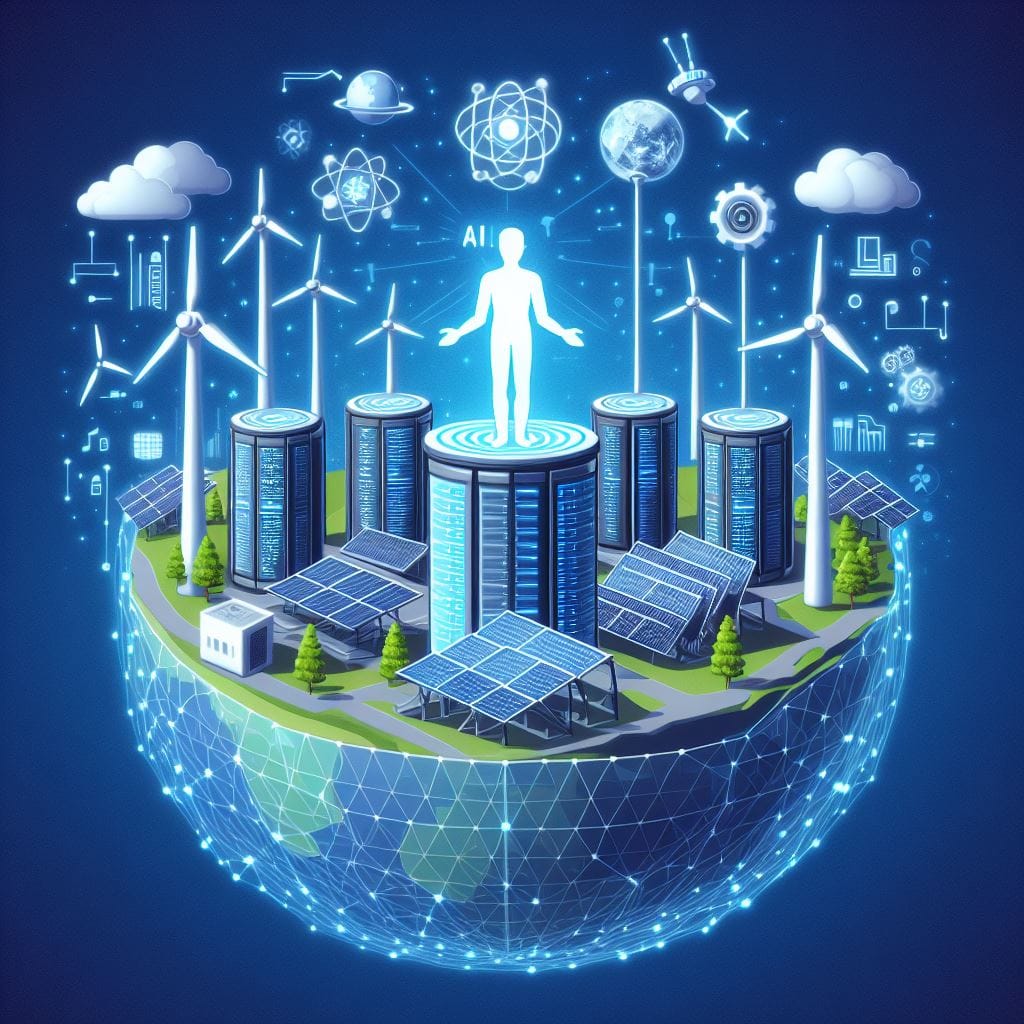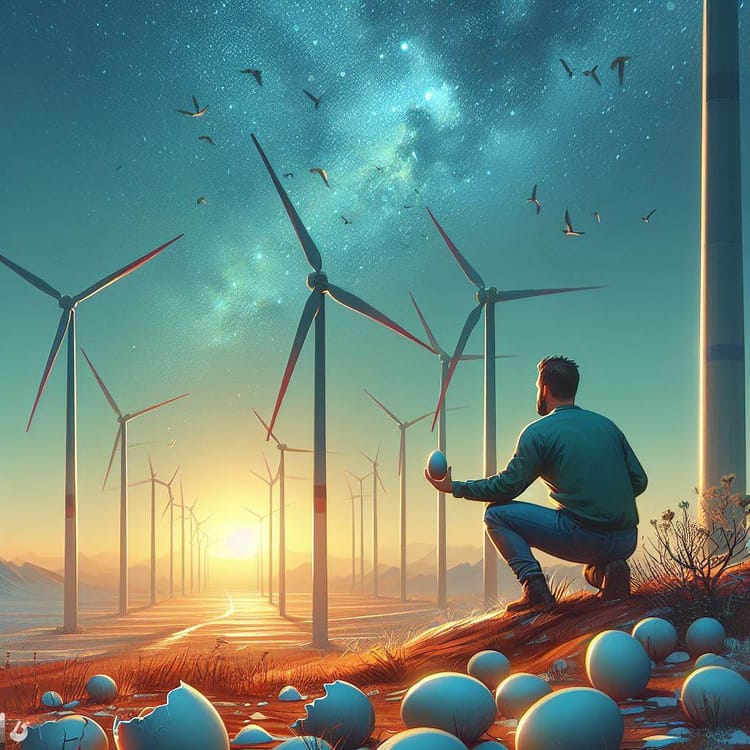A nuclear future for Australia?

Energy security is shaping as a key issue ahead of the next federal election. While the energy crisis has abated, for now – wholesale power prices have eased considerably from their 2022-23 highs largely thanks to big declines in spot coal and gas prices – how to future-proof the grid remains up for debate.
Specifically, how should we go about replacing the big black (brown if you're in Victoria) hole that will be left by coal as the country decarbonises, and is nuclear power the answer?

The end of coal
There is no question that coal power generation will eventually disappear, given governments (state and federal) have all committed to shutting them down. The Australian Energy Market Operator (AEMO) is forecasting all coal power generation to have ceased by 2038, with 90% of that gone by as soon as 2034-35. The expected early retirement of coal comes because of the "challenges and risks [that] are already being experienced":
"Unplanned coal generator outages are becoming more common as the fleet ages. Planned projects are not progressing as expected, due to approval processes, investment decision uncertainty, cost pressures, social licence issues, supply chain issues and workforce shortages."
In other words, government policy has already spooked investors and it would take a brave, or foolish, individual to pump additional capital into a business that has been given an expiry date. A side effect of that will be that the closer a coal power plant gets to its expected end of life, the more its owners will cut back on even basic maintenance. If the state isn't ready, too bad: the owners will simply threaten to walk away unless the government steps up, as happened in WA last year:
"The WA government has extended a taxpayer-funded lifeline, to the tune of more than $200 million, to a failed foreign-owned coal mine that is critical to the state's biggest electricity system.
...
Mr Cook said without the $220 million, the mine could close suddenly, and hundreds of workers would lose their jobs, putting the Perth and South West electricity system at risk of blackouts."
Going forward, we might expect more coal bailouts if the switch away from coal to renewables doesn't pan out as promised; for example, the NSW government is already having "ongoing discussions" about extending the life of Origin's Eraring coal plant, which is due to close in August 2025.
The AEMO itself, which expects the loss of "dispatchable capacity" to be entirely offset by gas and battery storage, warned of the "real and growing... possibility that replacement generation is not available when coal plants retire".

But these are forecasts based on current policies and planned investment. Energy is a highly politicised issue, so inevitably the opposition party – currently the Coalition – will disagree with the government about what the future energy mix should look like. Provided there's no war or crisis in the meantime, how each major party proposes to move forward will be a key point of differentiation between them at the next election.
Could we see a nuclear revival?
One of those points of differentiation looks set to be nuclear power, which you may have noticed is missing from the AEMO's chart. That's because the current Labor government has explicitly ruled it out, at least according to Energy Minister Chris Bowen in a recent Op-ed:
"Let's be clear upfront. Nuclear is not being pushed as a genuine alternative to renewables. It's being used as a distraction and a delaying tactic... No plan for nuclear power in Australia will survive contact with reality."
Bowen frequently cites the CSIRO's GenCost report when pushing his case for renewables over nuclear and coal, even though the report:
- benchmarks nuclear costs against an unproven and non-commercial small modular reactor in the US, because large-scale nuclear is apparently "technology that is not appropriate for Australia", even as much smaller countries such as Sweden expand their stock of cheap, conventional nuclear reactors (the US is also a poor comparison due to considerable nuclear regulatory uncertainty).
- uses its own, somewhat suspect methodology to pick the high and low coal prices used in the analysis; and
- assumes a large amount of renewable investment already committed is "sunk", so is not "owed a reasonable return on investment" but does not apply the same logic to other energy options.
All of those methodological decisions made renewables look a lot better relative to coal and nuclear in the report, a finding that was jumped on by the opposition, which seems to have a newfound love for nuclear. In fact, after 12 years of doing absolutely nothing about nuclear power while in government, opposition leader Peter Dutton is now apparently all for it:
"There are 20 countries similar to ours... who have a nuclear industry or they're committed to do so.
It's the latest technology that has zero emissions and it can firm up renewables in the system."
The about-face by the Coalition looks to be an election strategy, rather than a belief that nuclear is actually a realistic option for Australia. For example, just five years ago then-Resources Minister, Matt Canavan, said:
"We've been trying to find a home for 40 years for that [Lucas Heights nuclear] waste. It's difficult because of the concerns about managing that waste. I completely understand that.
...
No one is going to make predictions about what happens in 20, 30 or 40 years' time. All I want to see is a system which allows the most affordable and sustainable energy solutions coming forward
I have previously expressed that it's relatively expensive and, obviously, we do have a task at hand domestically at the moment to get down our high power prices.
We're not afraid of the discussions or conversations and we have rightly said any change would have to be bipartisan, which is unlikely right now."
I'm not sure how the government was struggling to find a place to store the waste, given that Lucas Heights is tiny and the US was able to store 45-years' worth of spent fuel from a much larger facility in... what looks like a carpark:

But the real problem with Canavan's statement is that while he didn't explicitly object to nuclear – and rightly acknowledged the considerable uncertainty in this space – while he was in government, he made no attempt at paving the way for a regulatory environment that could give it a try. He now wants us to believe that this time he'll do something, even if it will almost certainly be blocked by a Labor opposition and would probably mean going through some relatively anti-nuclear independents to get it done.
As for Labor, Bowen could immediately dismiss the Coalition's plan by simply legalising nuclear. Call the Coalition's bluff and propose legislation; together they'd easily have the numbers to push it through. Bowen wouldn't even have to invest a cent: if nuclear is as bad of a deal for Australia as he so boldly claims, then no nuclear facilities will ever emerge, and he can stop wasting his staffer's time penning Op-eds dismissing it.
We may be too late, anyway
For those who aren't aware, nuclear is only illegal in this country because in 1998 the Howard government struck a deal with the Greens in exchange for a reactor at Lucas Heights, after "less than 10 minutes of debate on the matter". I would love nothing more than for our politicians to spend a bit longer on the subject and have a good, honest debate about nuclear power in Australia – then accepting or rejecting it on its merits – rather than having its fate sealed forever by a dodgy backroom deal in the 90s.
Alas, my personal feeling is that we have already waited too long; that we created a path dependent outcome and now we're so far behind, with zero local nuclear expertise and know-how, that nuclear doesn't make commercial sense here anymore. The time to build nuclear facilities in Australia was probably when interest rates were lower and when our coal plants still had plenty of life left in them: nuclear power plants are incredibly capital intensive, are sensitive to discount rates, and need to be heavily utilised (e.g. as baseload) to be economical.

If we already had a nuclear power industry in Australia, it would be a highly competitive low-carbon source of energy. But for countries that have recently tried to restart or start a nuclear program from scratch, it hasn't been easy going:
"These first-of-a-kind (FOAK) Generation III projects, particularly in most OECD countries, have been affected by construction delays and cost escalations. Consequently, stakeholder and public confidence in the ability of the nuclear industry to build new projects has been eroded. Additionally, the perception that new nuclear plants carry high project risk dissuades investors and has further reduced the ability of countries to attract financing for future projects.
These issues are not present in those countries that have been building plants continuously."
Now I could be wrong, or someone might come along and invent something that changes the calculus. Regardless, the most sensible approach isn't to argue about what type of energy should replace coal, but to be open to all the possibilities.
What is not helpful is when prominent politicians and industrialists, such as Chris Bowen and more recently Andrew Forrest, come out and call nuclear "misinformed, unscientific, uneconomic, plucked-out-of-thin-air bulldust" – a claim that would certainly be news to the operators of the world's 436 nuclear power plants across 32 different countries, with hundreds more either under construction, planned or proposed!
I agree that nuclear is no panacea, and various countries have experienced vastly differing outcomes. For example, according to the IEA's levelised cost of electricity indicator, nuclear power in Sweden produces the cheapest electricity in the world – cheaper than any wind, solar or hydro facility. By contrast, the excessively prescriptive regulatory regime that has existed in the US since the mid-1970s has made it very costly and difficult to open new facilities in the 'land of the free'.
What I would like to see from our politicians and business leaders is a sober look at the trade-offs. The ban on nuclear is difficult to justify on safety alone, and the public has started to warm to the idea of having a facility in their backyard, weakening the political case for prohibition: a recent Newspoll showed 55% were now in favour of nuclear power, with that figure rising to 65% among 18 to 34-year-olds.

A poll of AFR readers from July last year produced a similar result, with just 30% opposed to the idea:

No one – not Bowen, Dutton, or Forrest – knows if nuclear can work in Australia. They all have their reasons for their positions, whether it be saving face, political opportunism, or a thinly veiled cover for more wind and hydrogen subsidies while blocking a potential competitor. But without testing the market, it's all just speculation.
The only way we can know, for sure, whether nuclear should be in Australia's future is by legalising it, laying down a sensible regulatory framework that appropriately weighs costs (e.g. safety) with the benefits (e.g. energy, environment) – perhaps something similar to Canada's – then letting entrepreneurs go to work. The discipline of profit and loss would then determine where and what types of energy we should build to replace our aging coal plants, whether that be gas, hydro, wind, solar, or nuclear – or more likely, some combination of the lot.



Member discussion